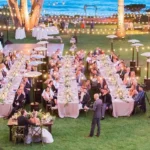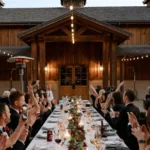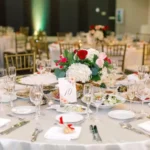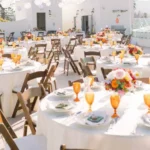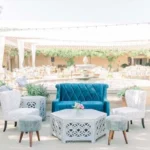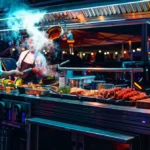Event planners may find it challenging to choose between open-air and enclosed tents. This guide compares both options, focusing on aesthetics, space considerations, and budget implications. By exploring the pros and cons of each tent style, you’ll gain valuable insights to make an informed decision for your next event. Whether you’re planning a backyard wedding or a corporate gathering, understanding the differences in design, mosquito protection, and color options will help you select the perfect tent to create a memorable experience for your guests.
Key Takeaways
- Open-air tents offer a natural ambiance but are vulnerable to weather conditions
- Enclosed tents provide better climate control and protection from the elements
- Proper space planning is crucial for both tent types to ensure guest comfort
- Budget considerations include rental costs, additional amenities, and potential weather contingencies
- Stakeholder input and personalization options help create the ideal tent experience for events
Understanding Open-Air Tents
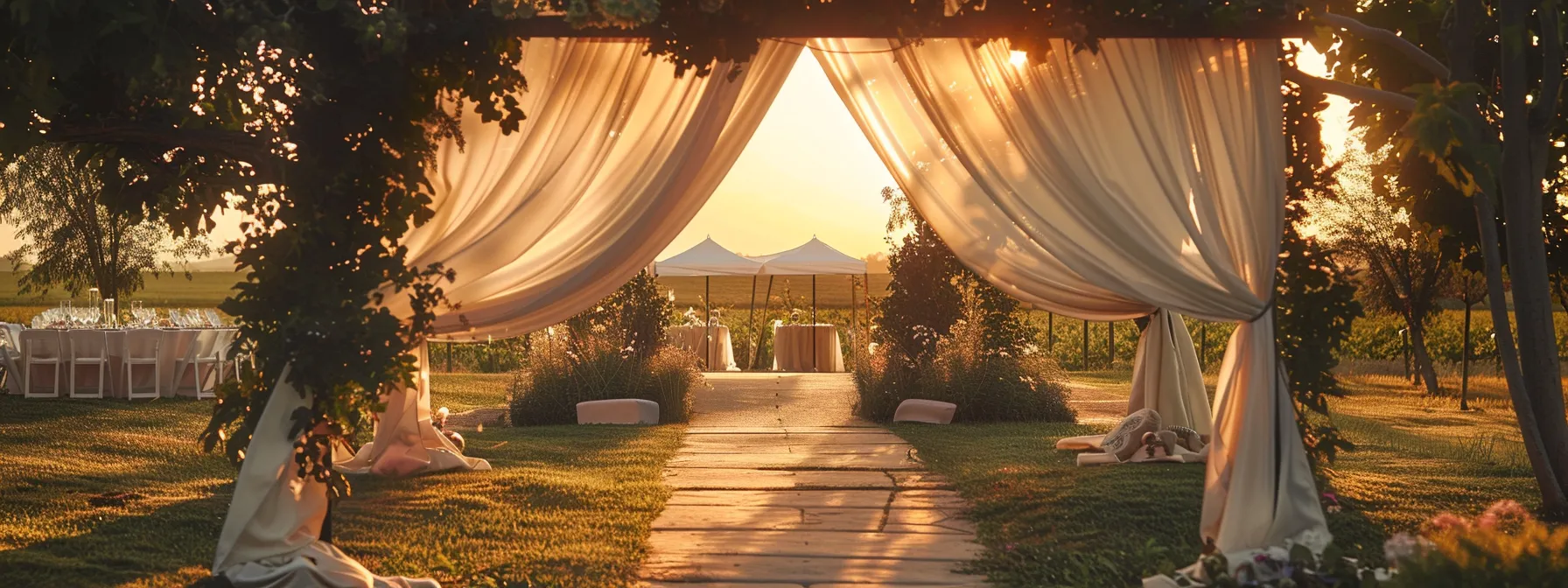
Open-air tents offer a unique event setting, blending outdoor ambiance with shelter. This section explores their defining features, advantages, ideal use cases, and potential challenges. Open-air tents provide versatile options for various events, from creating an airy room to managing heat. Understanding these aspects helps in making informed decisions for your outdoor gathering.
Defining the Characteristics of Open-Air Tents
Open-air tents are characterized by their lightweight structure and minimal walls, allowing for a seamless blend of indoor and outdoor spaces. These tents typically feature a roof made of durable plastic or alloy materials, supported by sturdy poles that can withstand various weather conditions. Unlike enclosed tents, open-air structures provide ample ventilation and natural light, making them ideal for garden parties, mountain retreats, or toy exhibitions. The key features of open-air tents include:
- Lightweight and portable design
- Roof made of durable materials like plastic or alloy
- Minimal or no walls for maximum airflow
- Versatile setup options for various outdoor settings
- Suitable for a range of events, from garden parties to mountain retreats
Advantages of Using Open-Air Tents
Open-air tents offer several advantages for event planners and hosts. Their versatile shape allows for easy setup in various outdoor settings, from picnic areas to expansive fields. The absence of walls provides unobstructed views and natural ventilation, creating a comfortable environment for guests. These tents can accommodate metal picnic tables, making them ideal for casual gatherings in places like Georgia, where outdoor events are popular.
Ideal Events for Open-Air Tent Settings
Open-air tents are ideal for events that benefit from natural light and gentle breezes. They work well for outdoor weddings, garden parties, and daytime corporate events. These tents often lack a floor, allowing guests to enjoy the grass or other natural surfaces. Their dome-like structure provides shelter while maintaining an airy feel. Event planners can use decorative boxes or planters to enhance the space and create defined areas within the tent:
| Event Type | Benefits of Open-Air Tents |
|---|---|
| Outdoor Weddings | Natural light for photos, connection to nature |
| Garden Parties | Seamless blend with surroundings, fresh air |
| Daytime Corporate Events | Bright atmosphere, promotes creativity |
Potential Challenges With Open-Air Tents
Open-air tents present challenges related to weather exposure and accessibility. Wind can affect stability, requiring careful placement of kitchen carts and equipment. Rain may necessitate quick adjustments, impacting the budget for additional protective measures. Temperature control becomes difficult, especially in extreme conditions. Event planners should consider these factors when choosing between open-air tents and more sheltered options like pergolas:
- Weather vulnerability (wind, rain, extreme temperatures)
- Limited climate control options
- Potential need for additional protective equipment
- Accessibility concerns for guests with mobility issues
- Increased setup and monitoring requirements
Exploring Enclosed Tents
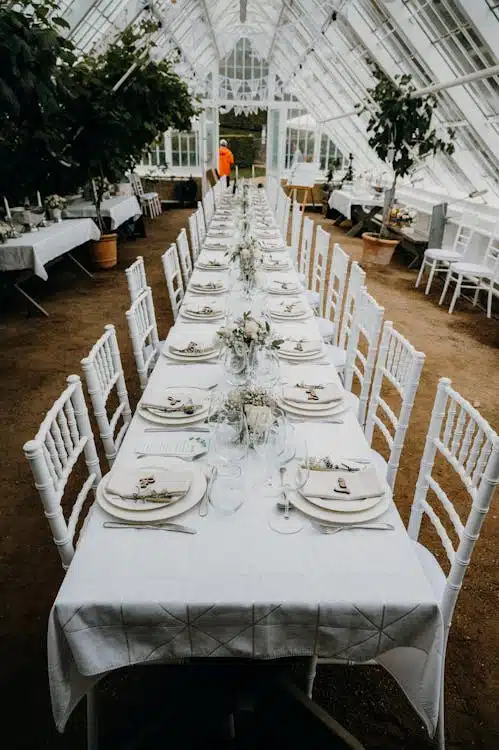
Enclosed tents offer protection from rain and wind, making them suitable for various events. This section examines their key features, benefits, ideal event types, and considerations. From weddings to picnics, enclosed tents provide versatile shelter options. Understanding these aspects helps event planners choose between enclosed structures and alternatives like open-air gazebos or steel-framed canopies.
Identifying Key Features of Enclosed Tents
Enclosed tents offer comprehensive protection from the elements, featuring sturdy walls and a sealed ceiling. These structures often include amenities like lighting, flooring, and climate control systems. Event planners can incorporate various elements to enhance the atmosphere, such as music systems and decorative awnings. Enclosed tents are versatile enough to accommodate diverse events, from weddings in Mexico to guinea pig shows, providing a controlled environment that shields guests from unexpected weather changes:
| Feature | Function |
|---|---|
| Sturdy walls | Protection from wind and rain |
| Sealed ceiling | Temperature control and weather resistance |
| Integrated lighting | Customizable atmosphere for various events |
| Flooring options | Stable surface for furniture and guests |
Benefits of Choosing Enclosed Tents
Enclosed tents offer numerous benefits for event planners and hosts. These structures provide a controlled environment, protecting guests from unexpected weather changes and allowing events to proceed smoothly regardless of outdoor conditions. The roof and walls of enclosed tents create a canvas for enhancing the beauty of any occasion, from weddings to corporate gatherings. Event organizers can easily incorporate cooking areas within the tent, ensuring food preparation is sheltered and convenient. The enclosed space also preserves the surrounding lawn, preventing damage from foot traffic and equipment. For added ambiance, wood flooring can be installed, creating a warm and inviting atmosphere.
Best Event Types for Enclosed Tents
Enclosed tents excel for a variety of events, particularly those requiring a controlled environment. They provide ideal shelter for weddings, corporate gatherings, and trade shows, offering protection from rain and wind. These structures work well for campsites, creating comfortable spaces for guests. Event planners can use polyvinyl chloride materials to enhance the tent’s durability and aesthetics. Enclosed tents also accommodate amenities like showers, making them suitable for multi-day events or outdoor festivals where guests need facilities. Their versatility allows brands to create immersive experiences, controlling every aspect of the environment from lighting to temperature.
Considerations When Opting for Enclosed Tents
When considering enclosed tents, event planners must evaluate the landscape, climate, and desired atmosphere. The tent’s size and shape should complement the surroundings while providing adequate protection from local weather conditions. Proper ventilation and climate control systems are essential for maintaining a comfortable environment, especially in hot or humid regions. The choice of materials, such as UV-resistant fabrics, can impact the amount of sunlight entering the space and affect the overall ambiance. Event organizers should also consider the tent’s impact on the existing landscape and any necessary home improvements for installation:
| Factor | Consideration |
|---|---|
| Landscape | Tent size and shape compatibility |
| Climate | Weather protection and ventilation needs |
| Atmosphere | Material choice for lighting and ambiance |
| Sunlight | UV-resistant fabric selection |
| Home Improvement | Installation requirements and site preparation |
Comparing the Aesthetics of Open-Air and Enclosed Tents
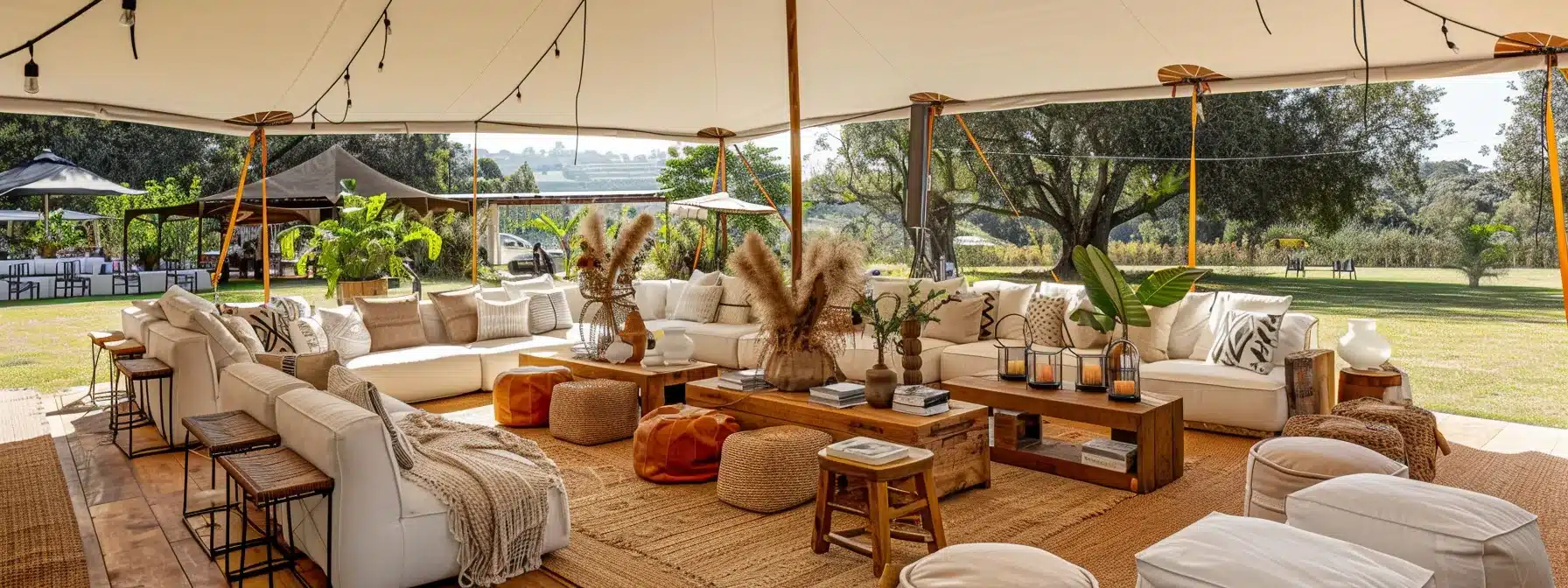
Open-air tents and enclosed tents each have unique aesthetic benefits for events. Open-air designs create a natural and airy atmosphere, while enclosed tents offer elegant interior settings. Both styles can be customized with furniture and decor to match different themes. Ranging from pavilions to polyester and nylon structures, each type provides distinct opportunities to enhance the event’s ambiance.
Visual Appeal of Open-Air Tent Designs
Open-air tent designs offer a unique visual appeal that connects customers with the surrounding environment. These tents create an airy, spacious atmosphere for parties, allowing natural light to filter through and provide a sense of openness. While mosquito protection may be a consideration, the tent’s structure can incorporate subtle netting or other features to maintain the open feel while ensuring guest comfort.
The Elegance of Enclosed Tent Interiors
Enclosed tent interiors offer elegant, controlled environments that showcase sophistication and style. The canopy provides protection from snow and other elements, allowing for year-round use. These tents often feature high ceilings and ample space, creating a grand atmosphere for events. Proper ventilation systems ensure comfort, while patio-like areas can be incorporated to blend indoor and outdoor aesthetics seamlessly.
Creating Atmosphere With Both Tent Styles
Both open-air and enclosed tents offer unique opportunities for creating memorable event atmospheres. Open-air tents allow for seamless integration with natural surroundings, ideal for outdoor weddings or garden parties. Enclosed tents provide more control over lighting, temperature, and decor, making them suitable for formal events or corporate gatherings. Event planners can enhance each style with appropriate furnishings, lighting, and decorations to match the desired theme:
- Open-air tents: Use natural elements, string lights, and lightweight fabrics
- Enclosed tents: Incorporate elegant draping, chandeliers, and climate control
- Both styles: Customize with themed decor, floral arrangements, and strategic lighting
Sizing and Space Considerations for Your Event
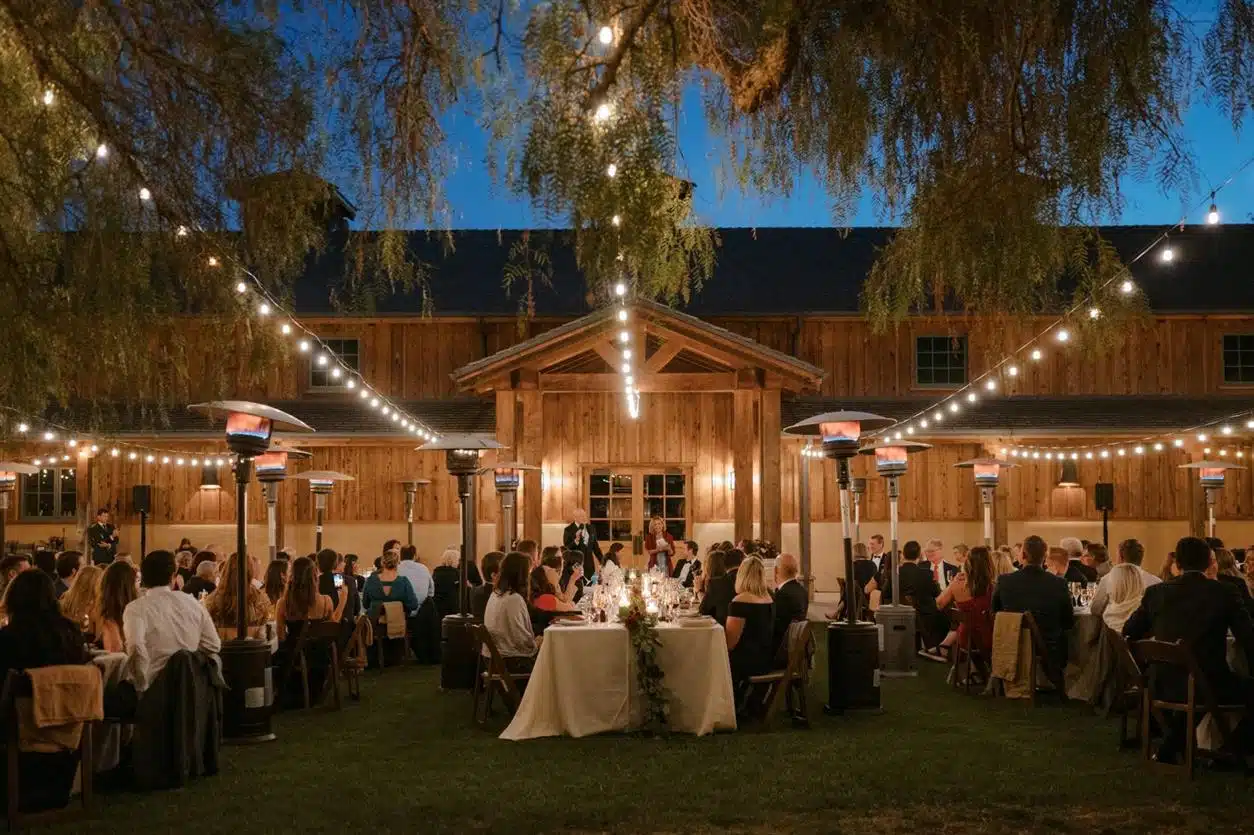
Selecting the right tent size is crucial for event success. This section explores space requirements for open-air and enclosed tents, focusing on guest comfort. It covers assessing open-air tent needs, evaluating enclosed tent layouts, and maximizing comfort across both styles. Understanding these factors helps event planners choose the ideal tent configuration.
Assessing Space Needs for Open-Air Tents
Assessing space needs for open-air tents requires careful consideration of guest count, event activities, and desired layout. Event planners must account for seating arrangements, dance floors, and catering areas while maintaining an open feel. The tent size should allow for comfortable movement and social distancing if needed. A general rule of thumb is to allocate 10-15 square feet per guest for seated events and 6-8 square feet for standing receptions:
| Event Type | Space per Guest | Additional Considerations |
|---|---|---|
| Seated Dinner | 10-15 sq ft | Table spacing, service areas |
| Standing Reception | 6-8 sq ft | Cocktail tables, bar areas |
| Wedding Ceremony | 8-10 sq ft | Aisle width, altar space |
Evaluating Room Layout for Enclosed Tents
Evaluating room layout for enclosed tents requires careful planning to maximize space efficiency and guest comfort. Event planners must consider the tent’s dimensions, accounting for structural elements like support poles and guy-wires that may impact usable space. The layout should accommodate essential areas such as seating, dance floors, stages, and catering stations while ensuring smooth traffic flow. Here’s a breakdown of space allocation for different event components:
| Event Component | Space Allocation |
|---|---|
| Dining Tables | 10-15 sq ft per person |
| Dance Floor | 3-4 sq ft per person |
| Bar Area | 100-200 sq ft total |
| Buffet Line | 100 sq ft per 100 guests |
Maximizing Guest Comfort Regardless of Tent Style
Event planners can maximize guest comfort in both open-air and enclosed tents by focusing on key elements. Proper ventilation systems ensure fresh air circulation, while strategic lighting creates a welcoming atmosphere. Adequate spacing between tables and chairs allows for easy movement, and comfortable seating options cater to extended events. Organizers should also consider temperature control measures, such as fans or heaters, to maintain a pleasant environment throughout the event.
Budgeting for Open-Air and Enclosed Tents
Budgeting for open-air and enclosed tents involves considering various cost factors and pricing structures. This section examines the expenses associated with each tent style and explores budget-friendly options. Understanding these aspects helps event planners make informed decisions when selecting the most suitable tent for their needs and financial constraints.
Cost Factors Associated With Open-Air Tents
Open-air tents typically have lower rental costs compared to enclosed tents due to their simpler structure. However, event planners must factor in additional expenses for weather contingencies. These may include:
- Backup rain plans
- Temporary flooring or ground cover
- Portable heating or cooling systems
- Extra lighting for evening events
- Wind barriers or stabilizing equipment
Pricing Structures for Enclosed Tents
Enclosed tents typically have higher rental costs due to their more complex structure and additional features. Pricing often depends on the tent size, material quality, and included amenities such as flooring, lighting, and climate control systems. Event planners should consider the following factors when budgeting for enclosed tents:
| Factor | Impact on Price |
|---|---|
| Tent Size | Larger tents cost more |
| Material Quality | Higher quality materials increase price |
| Amenities | Additional features add to overall cost |
| Rental Duration | Longer rentals may offer discounted rates |
| Setup and Teardown | Labor costs for installation and removal |
Finding Budget-Friendly Options for Both Styles
Event planners can find budget-friendly options for both open-air and enclosed tents by comparing rental companies, considering off-peak season discounts, and exploring package deals. Opting for basic tent structures and sourcing separate amenities can reduce costs. Some rental companies offer hybrid tent options that combine features of both styles at a more affordable price point:
| Cost-Saving Strategy | Potential Savings |
|---|---|
| Off-peak season rentals | 10-30% discount |
| Package deals | 15-25% overall savings |
| Basic structure + separate amenities | 20-40% compared to all-inclusive |
| Hybrid tent options | 10-20% vs. full enclosed tent |
Making the Final Decision on Tent Style
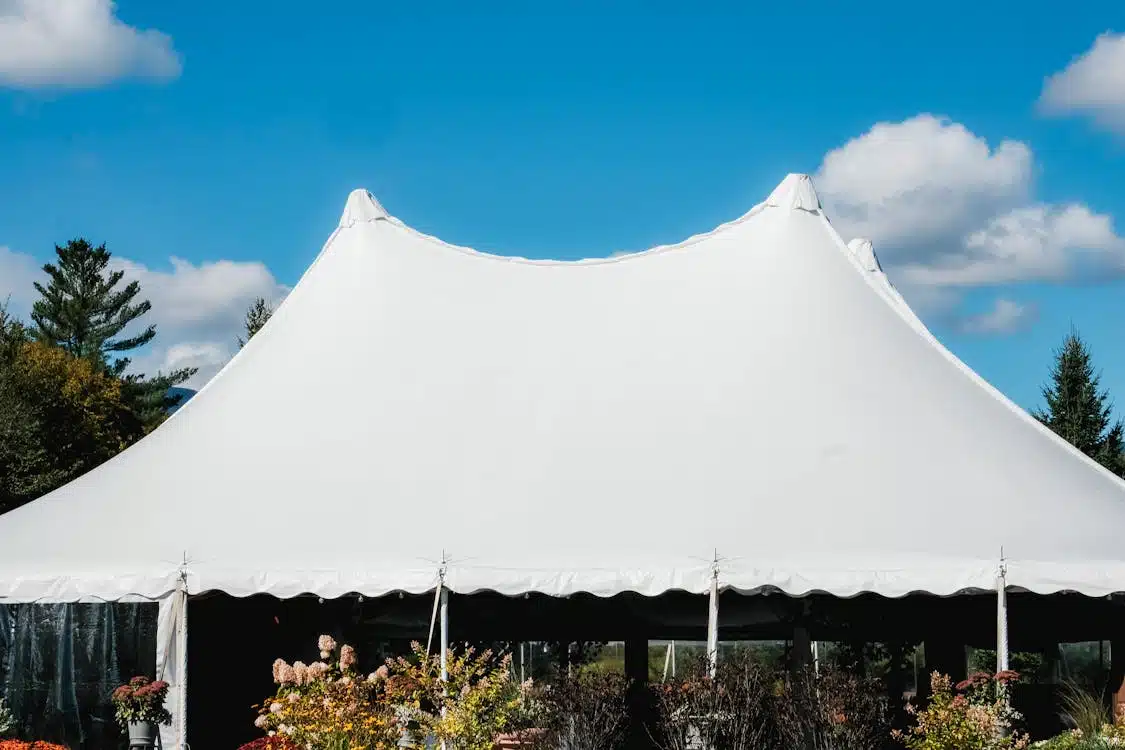
Choosing between open-air and enclosed tents involves weighing key factors, consulting stakeholders, and considering guest experience. This section examines influencing elements, stakeholder input methods, and ways to personalize the tent setup for attendees. Understanding these aspects helps event planners make informed decisions that align with event goals and guest preferences.
Factors to Influence Your Tent Choice
Event planners must consider several factors when choosing between open-air and enclosed tents. Weather conditions play a crucial role, as open-air tents offer less protection from rain or extreme temperatures. The event type and guest preferences also influence the decision, with formal gatherings often favoring enclosed tents for a more controlled environment. Budget constraints, venue restrictions, and setup time requirements further impact the final choice. Ultimately, the tent style should align with the event’s overall atmosphere and practical needs.
Gathering Input From Stakeholders
Event planners should gather input from key stakeholders to make informed decisions about tent style. This process involves consulting with clients, venue managers, and event staff to understand their preferences and requirements. Surveys or focus groups can help gauge guest expectations and preferences. By considering diverse perspectives, event organizers can choose a tent style that aligns with the event’s objectives and attendee needs.
Personalizing the Tent Experience for Your Guests
Event planners can personalize the tent experience by tailoring the setup to match the event theme and guest preferences. They can incorporate custom lighting, decorations, and seating arrangements that reflect the desired atmosphere. For open-air tents, planners might add portable heaters or fans to ensure comfort in various weather conditions. In enclosed tents, they can create distinct zones for different activities, such as a lounge area or a dance floor, to enhance the guest experience.
Conclusion
Selecting the right tent style is crucial for event success, with open-air and enclosed tents offering distinct advantages and challenges. Open-air tents provide a natural, airy atmosphere ideal for outdoor events, while enclosed tents offer greater protection and control over the environment. Event planners must carefully consider factors such as weather, budget, guest preferences, and event type when making their decision. Ultimately, the chosen tent style should align with the event’s goals, enhance the guest experience, and create a memorable atmosphere that leaves a lasting impression on attendees.

